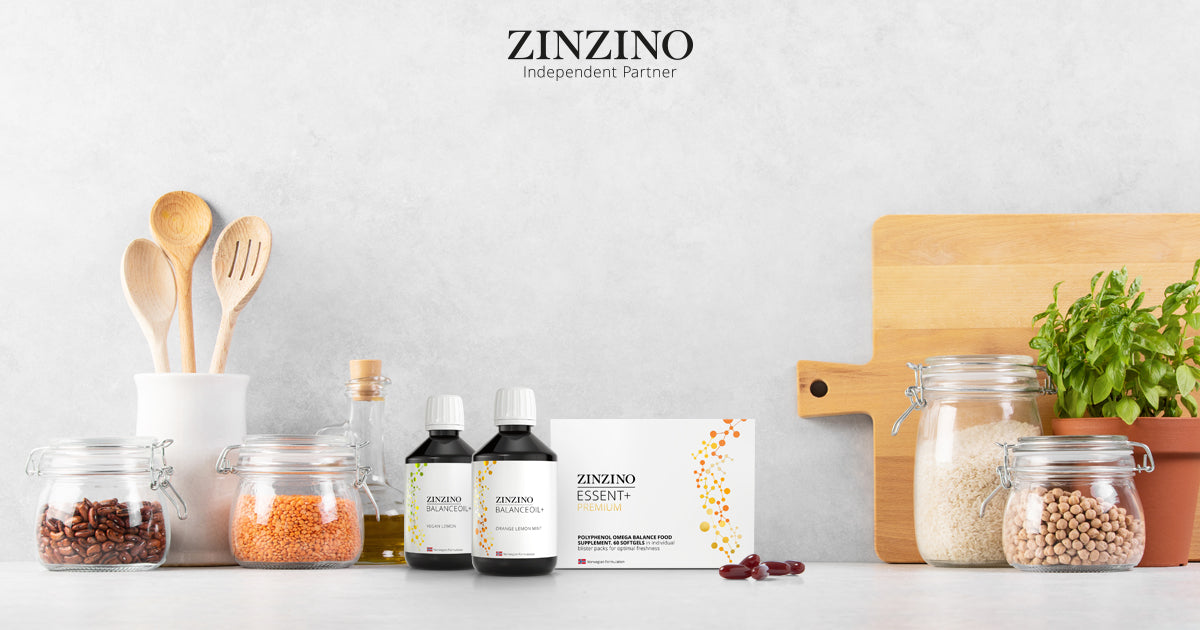zinzino
BalanceTest
BalanceTest
Couldn't load pickup availability
The BalanceTest is the foundation of our Balance concept. It provides you with accurate readings of 11 fatty acid levels in your blood and your essential Omega-6:3 ratio with six different health markers. The analysis is independently managed, and the results are completely anonymous, telling you upfront if the body’s Omega nutrients are in balance. The test includes personalised recommendations and guidelines on how to restore the essential Omega-6:3 balance in your body and move forward on your health journey.
This test includes a 1-1 with one of our doctors and all results are available in your helfy® account!
Key Benefits
- Easy-to-use dried blood spot self-test
- Measures 11 fatty acids in your blood
- Provides data about your Omega-6:3 Balance
What we measure
The test measures 11 fatty acids, including saturated, monounsaturated (Omega-9) and polyunsaturated (Omega-6 and Omega-3) fatty acids. Individual fatty acid values are shown in the table and expressed as percentages of the total fatty acids measured. For comparison in the table, the average range for each fatty acid (based on data obtained from a large group of balanced people) is presented as Target Value. The following fatty acids are measured:
Palmitic acid, C16:0, saturated fat
Stearic acid, C18:0, saturated fat
Oleic acid, C18:1, Omega-9
Linoleic acid, C18:2, Omega-6
Alpha-linolenic acid, C18:3, Omega-3
Gamma-linolenic acid, C18:3, Omega-6
Dihomo-gamma-linolenic acid, C20:3, Omega-6
Arachidonic acid (AA), C20:4, Omega-6
Eicosapentaenoic acid (EPA), C20:5, Omega-3
Docosapentaenoic acid (DPA), C22:5, Omega-3
Docosahexaenoic acid (DHA), C22:6, Omega-3
Certified test kit
The Zinzino Dried Blood Spot Test is certified to comply with the European regulation 98/79/EB on in vitro diagnostic (IVD) medical devices. This means the test and all its components are in compliance with applicable laws and regulations, and so the Kit has the CE mark on it.
This is how your results are calculated
11 fatty acids are analyzed and the total sum of their amounts is considered 100%. For the following 6 values, we use 7 of the fatty acids. The analyzed amount of each of the 7 fatty acids is calculated as a percentage out of the 100%.
1. Omega-3 Eicosapentaenoic acid (EPA)
2. Omega-3 Docosahexaenoic acid (DHA)
3. Omega-3 Docosapentaenoic acid (DPA)
4. Omega-6 Arachidonic acid (AA)
5. Omega-6 Dihomo-gamma-linolenic acid (DGLA)
6. Saturated fat, Palmitic acid (PA)
7. Saturated fat, Stearic acid (SA)
Protection value
First, the following 3 recognized health indicators are calculated:
1. The value for the Omega-6 ratio is calculated like this: (DGLA+AA) * 100 / (DGLA+AA+EPA+DPA+DHA)
2. The value for the Omega-3 level is the sum of EPA+DHA
3. The Balance value is calculated as Omega-6 (AA) / Omega-3 (EPA)
Each indicator value is given the same weight in a second calculation and assigned a value between 0 and 100, which is then divided by 3 to get the Protection Value that ideally should be above 90. This does not tell anything about the health status of the person, only the fatty acid protection level.
Note: EPA and DHA values have a high impact on all the calculations and if EPA and DHA percentages are low, then as a result very low or even zero Protection Values are not uncommon.
Omega-3 Index
The Omega-3 Index is the summary of the percentage values for the two marine Omega-3 fatty acids EPA and DHA. The ideal combined level is at least 8%, but higher values like 10% are desirable. Omega-3’s have many benefits because they are the primary building blocks in your cells. EPA is dominant in the blood, muscles and tissues, while DHA is dominant in the brain, sperm and eyes.
Omega-6:3 Balance
The balance is calculated by dividing the percent value of AA with the percent value of EPA (AA / EPA), which is then expressed as a Balance value, for example 3:1. The Omega-6:3 Balance in the body should preferably be below 3:1. If this ratio is above 3:1, you will benefit from a change in your diet. A low balance of Omega-6 and Omega-3 is important for maintaining normal cell and tissue development (homeostasis) and help the body control inflammation.
Cell membrane fluidity
Fluidity is calculated by dividing the percent value of the two saturated fats with the percent value of the two Omega-3’s. The fluidity value is thus defined as (PA+SA) / (EPA+DHA), and the result is expressed as a fluidity index, for example 3:1. If the fluidity value is below 4:1, it shows that there is sufficient fluidity in cell membranes. The more saturated the fats are in a membrane, the more rigid is the membrane. Conversely, the more polyunsaturated the fats are in a membrane, the more fluid is the membrane. Cell membrane composition and structural architecture is critical for the health of the cells and hence the body. On the one hand, the membrane needs to be rigid enough to provide sound cellular structural architecture. On the other hand, the membrane needs to be fluid enough to allow nutrients in and waste products out.
Mental strength
This is calculated by dividing the percent value of AA with the sum of the percent values of EPA and DHA, i.e. the Mental Strength value = AA / (EPA+DHA). The result is expressed as a mental strength value, for example 1:1. The value should be below 1:1 for sufficient and balanced supply of both Omega-6 and Omega-3 fatty acids to the brain and the nervous system. Cognitive performance improves with increased consumption of marine Omega-3’s EPA and DHA. Childhood and old age are two critical and vulnerable stages and Omega-3 deficiency is associated with learning and memory deficits, as well as mood problems.
Arachidonic acid (AA) index
The AA Index shows the measured value of the Omega-6 fatty acid Arachidonic acid (AA) as a percentage out of the total fatty acids measured. Good average values are in the range of 6.5 to 9.5% with an optimum target value of 8.3%. Arachidonic acid (AA) is the most important Omega-6 fatty acid for the body. It is the starting point for the production of local tissue hormones triggered by Omega-6, such as prostaglandins, thromboxanes and leukotrienes, all with various functions. The overall function is, however, to protect the body from damage by limiting the progression of the infection or the impact of the injury.
Share










